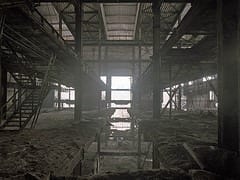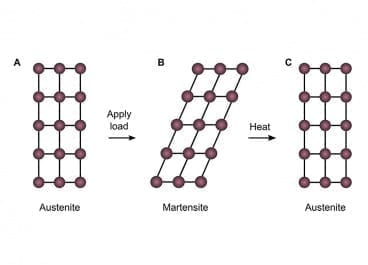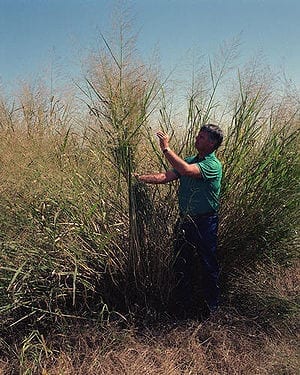
“This technique allows you to achieve ‘theoretical density,’ meaning it eliminates all of the porosity in the material”
A researcher from North Carolina State University has developed a technique for creating high-density ceramic materials that requires far lower temperatures than current techniques – and takes less than a second, as opposed to hours. Ceramics are used in a wide variety of technologies, including body armor, fuel cells, spark plugs, nuclear rods and superconductors.
At issue is a process known as “sintering,” which is when ceramic powders (such as zirconia) are compressed into a desired shape and exposed to high heat until the powder particles are bound together into a solid, but slightly porous, material. But new research from Dr. Jay Narayan, John C. Fan Distinguished Chair Professor of Materials Science and Engineering at NC State, may revolutionize the sintering process.
Narayan’s new technique, selective-melt sintering, allows sintering of yttria-stabilized zirconia at 800 degrees Celsius (C) – instead of the conventional 1450 C. In addition, using the selective-melt sintering technique, it is possible to sinter zirconia at 800 C in less than a second, and create a material with no porosity at all. In contrast, traditional sintering techniques take four to five hours at 1450 C.
“This technique allows you to achieve ‘theoretical density,’ meaning it eliminates all of the porosity in the material,” Narayan says. “This increases the strength of the ceramic, as well as improving its optical, magnetic and other properties.”
The key to Narayan’s approach is the application of an electric field, at approximately 100 volts per centimeter, to the material. When this field is applied, it creates subtle changes in the material’s “grain boundaries” – where atoms from different crystals meet in the material. Namely, the field draws “defects” to the grain boundary. These defects consist of vacancies (missing atoms) which can carry charges. The defects are negatively charged and draw current from the electric field to the area – which raises the temperature along the grain boundary.
The Latest Bing News on:
High-Density Ceramics
- Ceramic Vs Metal: Which Pan Is Better For Baking Pie Crusts?on May 11, 2024 at 9:30 am
If you need to bake a pie, you might wonder which type of pan yields a better pie crust. We experimented with a basic crust recipe and reviewed the results.
- How to Get High Friction Surfaces Without the High Coston May 11, 2024 at 7:57 am
Expanded shale, clay and slate (ESCS) lightweight aggregate have a high retention rate, better wet-road traction, and the ability to reduce the amount of emulsion necessary to reseal a road.
- New CMC turbine vanes successfully tested in wind tunnelon May 10, 2024 at 9:03 am
SiC/SiC CMC inlet guide vanes for a high-pressure turbine are aimed for a geared turbofan and show promise for more efficient aeroengines.
- Empower’s new ultra-low 1 pH ESL silicon capacitor tightens voltage regulation for AI chipson May 7, 2024 at 4:43 am
Empower Semiconductor has unveiled the largest silicon capacitor in its ECAP product family for high frequency decoupling. The new EC1005P is a single 16.6-microfarad (μF) capacitance device suitable ...
- Global High Temperature Ceramics Market Set to Reach US$ 9.27 Billion by 2032, Fueled by Growing Demand and Energy Efficiency Driveon April 30, 2024 at 8:13 am
The global high temperature ceramics market is poised for significant growth, with an estimated value of US$ 4.67 billion in 2022, projected to reach US$ 9.27 billion by 2032, showcasing a robust CAGR ...
- Ceramics made plastically deformable at room temperatureon April 30, 2024 at 4:00 am
Ceramics could be applied more widely following the development of a patent-pending method at Purdue University that makes them more plastically deformable at room temperature.
- Westfield receives $957K for sewer projecton April 29, 2024 at 8:05 am
State Sen. Gene Yaw (R-23) and State Rep. Clint Owlett (R-68) announced a $957,846 state investment allocated to Westfield Borough, Tioga County through the Pennsylvania Infrastructure Investment Auth ...
- Researchers improve the plasticity of ceramic materials at room temperatureon April 29, 2024 at 8:00 am
Researchers in Purdue University's College of Engineering have developed and validated a patent-pending method that could expand the industrial applications of ceramics by making them more plastically ...
- Purdue researchers improve the plasticity of ceramic materials at room temperatureon April 29, 2024 at 6:09 am
WEST LAFAYETTE, Ind. — Researchers in Purdue University’s College of Engineering have developed and validated a patent-pending method that could expand the industrial applications of ceramics by ...
- Top 5 Best Glues for Hard Plastic in 2024on April 16, 2024 at 5:01 pm
However, when the target material includes stone, ceramics, wood ... vital to understand the different types of the material. High-density polyethylene (HDPE) is the main material used when ...
The Latest Google Headlines on:
High-Density Ceramics
[google_news title=”” keyword=”High-Density Ceramics” num_posts=”10″ blurb_length=”0″ show_thumb=”left”] [/vc_column_text]The Latest Bing News on:
Sintering
- Cold sintering may rescue plastic, ceramics, battery components from landfillson May 8, 2024 at 5:00 pm
Cold sintering — the process of combining powder-based materials into dense forms at low temperatures through applied pressure using solvents — allows for materials to be recycled again and again.
- Researchers improve the plasticity of ceramic materials at room temperatureon April 29, 2024 at 8:00 am
Researchers in Purdue University's College of Engineering have developed and validated a patent-pending method that could expand the industrial applications of ceramics by making them more plastically ...
- Purdue researchers improve the plasticity of ceramic materials at room temperatureon April 29, 2024 at 6:09 am
WEST LAFAYETTE, Ind. — Researchers in Purdue University’s College of Engineering have developed and validated a patent-pending method that could expand the industrial applications of ceramics by ...
- Researchers quantify the ideal in situ construction method for lunar habitatson April 17, 2024 at 5:00 pm
Sintering/melting involves subjecting the regolith to high-temperature treatment, with in situ ratios commonly reaching 100%. However, heating temperatures exceeding 1,000°C can pose challenges ...
- laser sinteringon April 24, 2023 at 5:01 pm
At the level pursued by many Hackaday readers, the advent of affordable 3D printing has revolutionised prototyping, as long as the resolution of a desktop printer is adequate and the part can be ...
- Field Assisted Sintering Technologyon March 7, 2022 at 9:17 am
Controlled and rapid solid-state sintering process for a wide range of powder and particulate materials. It can consolidate a wide-range of metallic, ceramic, and functional materials. Capability to ...
- 6.3. Loose Sinteringon February 25, 2018 at 6:45 pm
Basically, metal powder is poured or vibrated into a mould which is then heated to the sintering temperature in an appropriate atmosphere. The form and complexity of shape which can be made by this ...
- 6.8: Sintering Atmosphereon February 17, 2018 at 12:23 am
Reducing atmospheres are, by far, most commonly used for sintering metal parts. Pure hydrogen is an excellent reducing gas, but it is not economical except in case of high valued products. Hydrogen is ...
- Sintering Sand WIth A Laser Cutteron December 7, 2016 at 5:13 am
The real objects of desire though are unlikely to grace the average hackspace. Selective Laser Sintering 3D printers use a laser on a bed of powder to solidify a 3D object layer by layer.
The Latest Google Headlines on:
Sintering
[google_news title=”” keyword=”sintering” num_posts=”10″ blurb_length=”0″ show_thumb=”left”]










